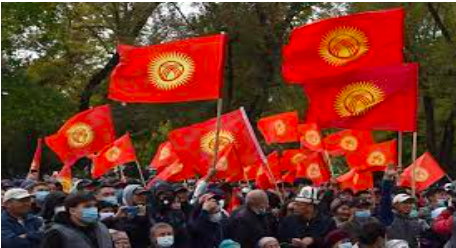Wuhan
Posted on : April 13, 2020Author : AGA Admin

Wuhan, Wade-Giles romanization Wu-han, capital and major industrial and commercial city of Hubei sheng (province), China. It is located at the confluence of the Han and Yangtze rivers and consists of a conurbation of three adjacent former cities—Hankou (Hankow), Hanyang, and Wuchang. Hankou lies on the north bank of the Yangtze River (Chang Jiang) at the mouth of the Han River. Immediately across the Han from it is the older town of Hanyang, and across from these two, on the south bank of the Yangtze, is the ancient metropolis of Wuchang, which is the seat of the provincial government. In 1949 the government of the newly formed People’s Republic of China merged the three cities into the single entity of Wuhan. The triple city of Wuhan has a geographical centrality that gives its site immense strategic and commercial significance. Lying at the very heart of China, it is roughly equidistant from the cities of Beijing and Guangzhou (Canton) on a north-south axis and also is equidistant from Shanghai and Chongqing on an east-west line.
The earliest settlement in the area, during the Xi (Western) Zhou period (1046–771 BCE), was to the southeast of Wuchang, which became a capital city of the Wu dynasty during the Three Kingdoms (Sanguo) period (220–280 CE). The primarily administrative role of Wuchang continued throughout the Yuan (1206–1368) and Ming (1368–1644) dynasties, when it served as a provincial capital. Hanyang was founded during the Sui dynasty (581–618 CE) but was of minor commercial significance. In contrast, Hankou (then known as Xiakou) became known during the Song dynasty (960–1279) as one of China’s four major commercial cities. The opening of Hankou to foreign trade under the terms of the treaties of Tianjin (1858) between China, France, and Great Britain gave added impetus to the commercial and industrial development of the three cities. Concessions in Hankou were granted between 1861 and 1896 to British, French, German, Japanese, and Russian interests, and a number of foreign commercial, trading, and shipping firms opened offices there during that period.
The three Wuhan cities played a prominent role in the 20th-century history of China. The Chinese Revolution of 1911–12, which toppled the Qing (Manchu) dynasty, broke out in the army barracks at Wuchang, and the line of heights overlooking the Han River there was the scene of the principal fighting between the imperial and revolutionary troops—the main objective being the government arsenal at Hanyang. Hankou’s workers were in the forefront of the general strike of 1923, which was the first large-scale worker industrial action in China. The capture of Hankou by the Nationalist (Kuomintang) armies marching northward from Guangdong province in December 1926 marked the extension of Nationalist power to the middle Yangtze valley. It was followed by a serious mob onslaught on the British concession in Hankou, after which an agreement was reached replacing the British municipal council there with one of mixed Chinese and British composition. The Wuhan cities soon afterward became a centre of conflict between the Nationalists and communists in their short-lived coalition government. After the split between the Nationalists and the communists in 1927, a left-wing faction of the Nationalists maintained its headquarters in Hankou. Mao Zedong, the future communist and national leader, ran a Peasant Movement Institute in Wuchang, where the Fifth Congress of the Chinese Communist Party was convened in 1927. After the fall of the Nationalist capital of Nanjing to the invading Japanese in 1937, the Chinese government withdrew to Hankou, which temporarily became the base for Chinese resistance. Hankou fell to the Japanese in October 1938 after a defense that lasted more than four months, and the city was occupied by the Japanese until 1945, after which it reverted to Nationalist control. The three cities were taken by the Chinese communist forces in 1949.




